-
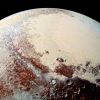 +40 +1
+40 +1Pluto Up Close | 03.21.16
Ever since last summer’s Pluto flyby of NASA’s New Horizons spacecraft, two UVA scientists have been astounded by images streaming in from the edge of the solar system: breathtaking shots of Pluto and its moons, close-up views of icy mountains, glaciers of frozen nitrogen and the dwarf planet’s hazy, tenuous atmosphere. UVA planetary astronomer Anne Verbiscer, and UVA planetary geologist Alan Howard were among the first scientists to witness and begin analyzing photos and data.
-
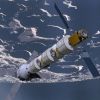 +29 +1
+29 +1U.S. and Russian Scientists Are Making Plans to Go Back to the Moon Together
American and Russian engineers are getting closer to a new plan for cooperating in space, one that would go beyond low Earth orbit and preserve the multinational alliance forged at the dawn of the International Space Station program in 1993. Organizations on both sides are quietly toying with the idea of going back to the moon together. That is, if politics don't get in the way. With the ISS scheduled to make a controlled plunge into the ocean in 2024, the partners have been preparing to go their own ways. NASA, while funding companies like SpaceX to go to orbit, is developing the Orion spacecraft and the super-heavy rocket called...
-
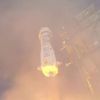 +28 +1
+28 +1Jeff Bezos Names Big Next Rocket New Glenn
Amazon boss Jeff Bezos says the big, re-usable rocket he has been developing inside his Blue Origin space company will be called New Glenn, after John Glenn.
-
 +9 +1
+9 +1That time a monkey flew to the edge of space and then smashed into a destroyer
“So the ship is really rolling, and the capsule is out there like a wrecking ball.
-
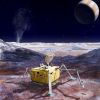 +29 +1
+29 +1Inside NASA’s daring $8 billion plan to finally find extraterrestrial life
A darkness has spread over the grim, airless field of ice that threatens to swallow us. Night has come to the nightmare glacier. But then we see the shiny spacecraft, with its four gangly legs extending outward to find purchase on the jagged ice. Within, scientific instruments begin to blink on, one by one. Soon, they will start sniffing for any hint of life on this most alien and mysterious of worlds in the Solar System: the Jovian moon Europa. Through the HoloLens each of us wears, we watch this simulation of what might happen about 15 years from now on the icy, forbidding moon.
-
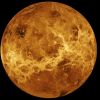 +22 +1
+22 +1The Case for Going to Venus
David Grinspoon looked as if someone had died. It was January 2017, and the astrobiologist had just received bad news. NASA had recently announced the results of its Discovery Program competition, which would decide where the agency would send its next outer space probe. The options: two asteroid missions or two individual Venus orbiters (another option involved an infrared space telescope). Grinspoon had been investigating Venus for most of his 30-year career. But NASA, to his chagrin, had gone with the asteroids.
-
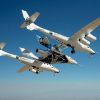 +15 +1
+15 +1Stephen Hawking is going into space thanks to Richard Branson
Stephen Hawking has been studying, theorizing, pondering, and writing about the universe and everything that makes it tick for decades upon decades, and now he’ll finally get his chance to head into the great unknown for himself. Hawking just revealed that he’s booked a flight on Richard Branson’s Virgin Galactic, thanks to the latter’s offer to help the renowned physicist and cosmologist make his dream of spaceflight a reality.
-
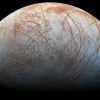 +14 +1
+14 +1Exploring Europa. NASA Keeps Planning Lander Mission
Next week, scientists will gather at the Astrobiology Science Conference (AbSciCon) in Mesa, Arizona. A quick glance at the 63 session topics shows Europa (and other ocean worlds) will be a hot topic of discussion. And it’s easy to see why. Earlier this month, two NASA missions gave us new insight into the icy, wet worlds of Enceladus and Europa. Enceladus stole most of the headlines, but the new data from Europa is promising.
-
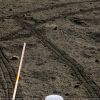 +41 +1
+41 +1China Reaches the Moon Snapping Incredible, Never-Before-Seen High-Definition Images
While exploring the lunar surface, China’s Chang’e 3 lander discovered a new type of moon rock, and managed to snap THOUSANDS of high-resolution images of the moon. For the first time ever, you can take a peek at the lunar surface like never before thanks to the sophisticated cameras located onboard the Chang’e 3, one of China’s most advanced lunar landers.
-
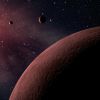 +18 +1
+18 +1NASA reveals 10 new potentially Earth-like planets
The Kepler space telescope's latest and most complete planet catalog adds 219 new candidates, including one that could be a close cousin to Earth.
-
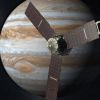 +27 +1
+27 +1NASA's Juno Spacecraft to Fly Over Jupiter's Great Red Spot July 10
Just days after celebrating its first anniversary in Jupiter orbit, NASA's Juno spacecraft will fly directly over Jupiter's Great Red Spot, the gas giant's iconic, 10,000-mile-wide (16,000-kilometer-wide) storm. This will be humanity's first up-close and personal view of the gigantic feature -- a storm monitored since 1830 and possibly existing for more than 350 years.
-
 +27 +1
+27 +1Moon Landings Faked? Filmmaker Says Not!
Writer/director S G Collins of Postwar Media debunks every theory that the Apollo Moon landings could have been faked in a studio. The filmmaker takes a look at the video technology of the late 1960's, showing alleged fraud was simply not possible.
-
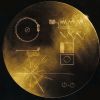 +29 +1
+29 +1'Golden Record 2.0' could let space probe communicate with aliens
NASA's New Horizons spacecraft could end up bearing a message for intelligent aliens, just as the agency's venerable Voyager probes are doing. Both Voyager 1 and Voyager 2 famously carry copies of the "Golden Record," which are loaded with photos, music, sounds and other data designed to teach any extraterrestrials who might encounter the probes about humanity and its home planet.
-
 +1 +1
+1 +1Record-breaking Astronaut Peggy Whitson returns to Earth
Astronaut Peggy Whitson returned to Earth late Saturday, wrapping up a record-breaking flight that catapulted her to first place for U.S. space endurance. Whitson's 665 days off the planet — 288 days on this mission alone — exceeds that of any other American and any other woman worldwide. She checked out of the International Space Station just hours earlier, along with another American and a Russian. Their Soyuz capsule landed in Kazakhstan shortly after sunrise Sunday — Saturday night back in the U.S.
-
 +1 +1
+1 +1Voyager 1 at 40: Scientists 'amazed' 1970s space probe still works
The Voyager 1 space probe was launched 40 years ago and continues to send back data from interstellar space.
-
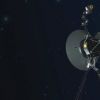 +33 +1
+33 +1Voyager 1, Humanity's Farthest Spacecraft, Marks 40 Years in Space
Voyager 1, humanity's most distant emissary, has now been streaking through space for 40 years.
-
 +24 +1
+24 +1Are we being watched? Tens of other worlds could spot the Earth
A group of scientists from Queen's University Belfast and the Max Planck Institute for Solar System Research in Germany have turned exoplanet-hunting on its head, in a study that instead looks at how an alien observer might be able to detect Earth using our own methods. They find that at least nine exoplanets are ideally placed to observe transits of Earth, in a new work published in the journal Monthly Notices of the Royal Astronomical Society.
-
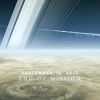 +13 +1
+13 +1Cassini: Mission to Saturn: Where is Cassini Now?
Cassini is one of the most ambitious efforts in planetary space exploration. A joint endeavour of NASA, ESA and the Italian space agency, Cassini is a sophisticated spacecraft exploring the Saturnian system since 2004. The final signal will take 83 minutes to reach Earth.
-
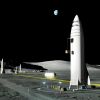 +18 +1
+18 +1Musk revises Mars ambitions—and they seem a little bit more real
Yes, Elon Musk still absolutely wants to go to Mars. But in a speech delivered Friday in Adelaide, Australia, the founder of SpaceX opened the door to sending humans to the Moon first. "It’s 2017, we should have a lunar base by now," he said, speaking just a couple of years shy of the 50th anniversary of the Apollo landings. "What the hell is going on?"
-
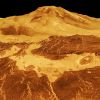 +15 +1
+15 +1Armed with tough computer chips, scientists are ready to return to the hell of Venus
In an underdog city, at an underdog NASA lab, researchers are thinking hard about an undeservedly neglected planet. Venus is Earth's cousin, closest in composition and size, but for decades it has remained veiled. NASA hasn't sent a mission there since 1989; more recent European and Japanese orbiters have made halting progress that stops largely at the planet's thick sulfur clouds. No craft has touched down since 1985, when the last of a series of advanced Soviet landers clad in armored pressure vessels endured a couple hours before succumbing to the deep-ocean pressure and furnacelike temperature of the planet's surface.
Submit a link
Start a discussion




















